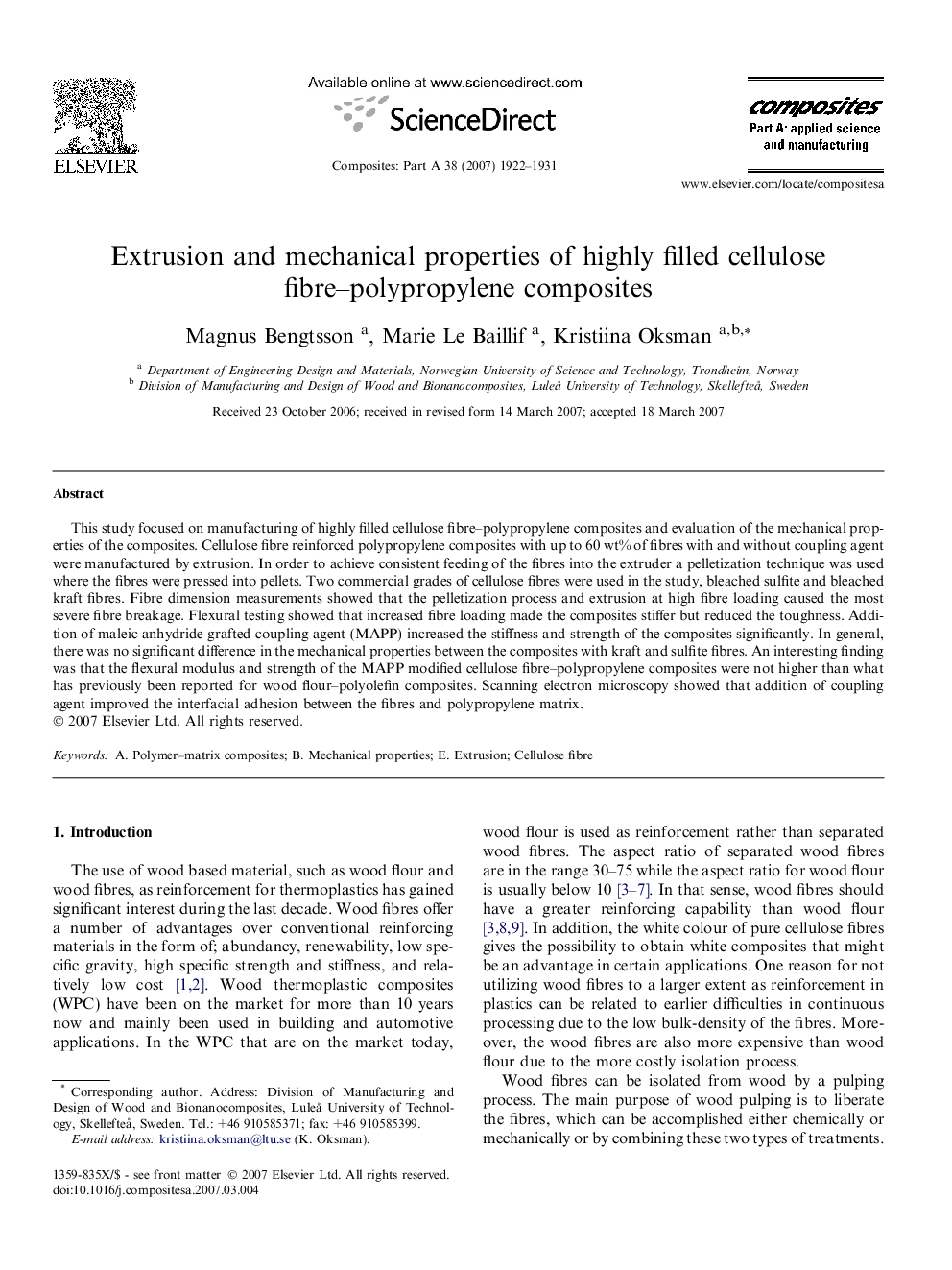| Article ID | Journal | Published Year | Pages | File Type |
|---|---|---|---|---|
| 1467517 | Composites Part A: Applied Science and Manufacturing | 2007 | 10 Pages |
This study focused on manufacturing of highly filled cellulose fibre–polypropylene composites and evaluation of the mechanical properties of the composites. Cellulose fibre reinforced polypropylene composites with up to 60 wt% of fibres with and without coupling agent were manufactured by extrusion. In order to achieve consistent feeding of the fibres into the extruder a pelletization technique was used where the fibres were pressed into pellets. Two commercial grades of cellulose fibres were used in the study, bleached sulfite and bleached kraft fibres. Fibre dimension measurements showed that the pelletization process and extrusion at high fibre loading caused the most severe fibre breakage. Flexural testing showed that increased fibre loading made the composites stiffer but reduced the toughness. Addition of maleic anhydride grafted coupling agent (MAPP) increased the stiffness and strength of the composites significantly. In general, there was no significant difference in the mechanical properties between the composites with kraft and sulfite fibres. An interesting finding was that the flexural modulus and strength of the MAPP modified cellulose fibre–polypropylene composites were not higher than what has previously been reported for wood flour–polyolefin composites. Scanning electron microscopy showed that addition of coupling agent improved the interfacial adhesion between the fibres and polypropylene matrix.
